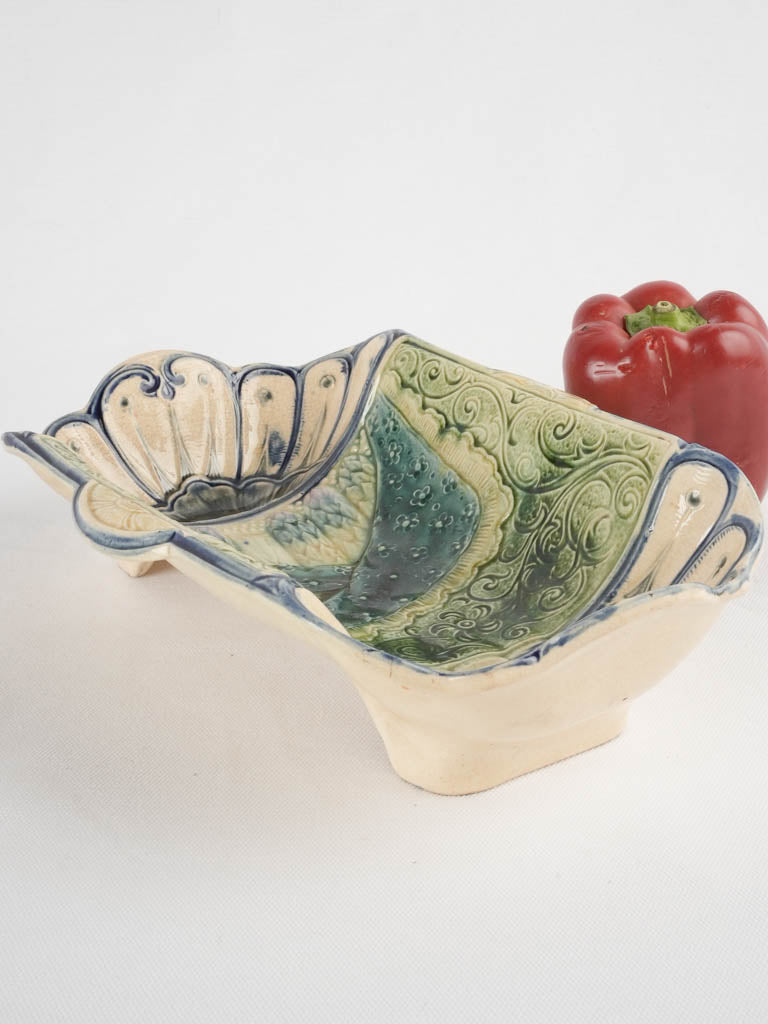
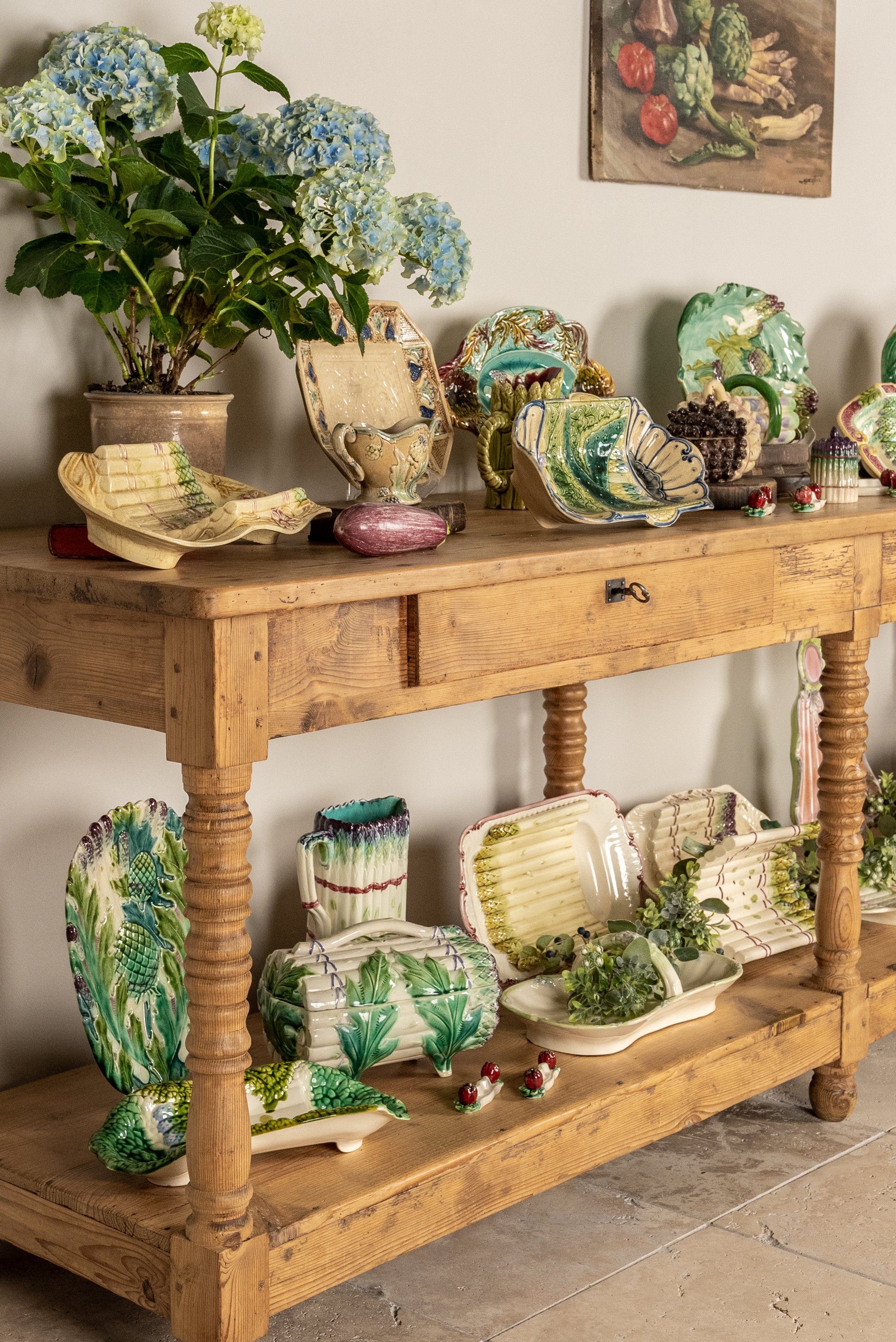
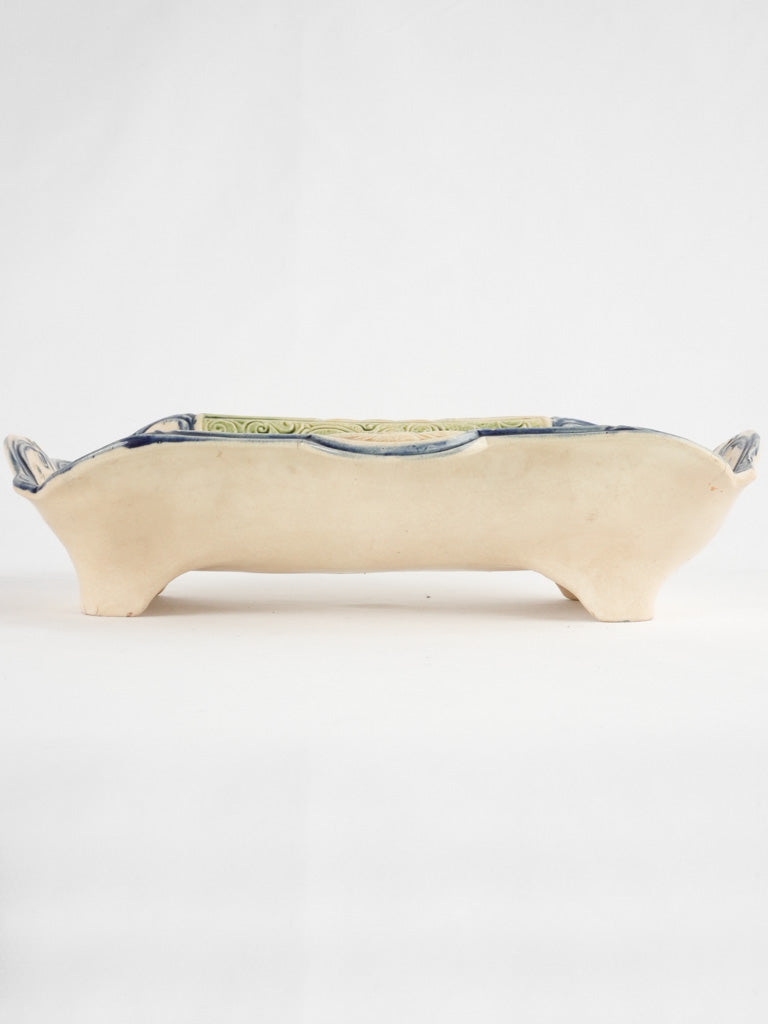
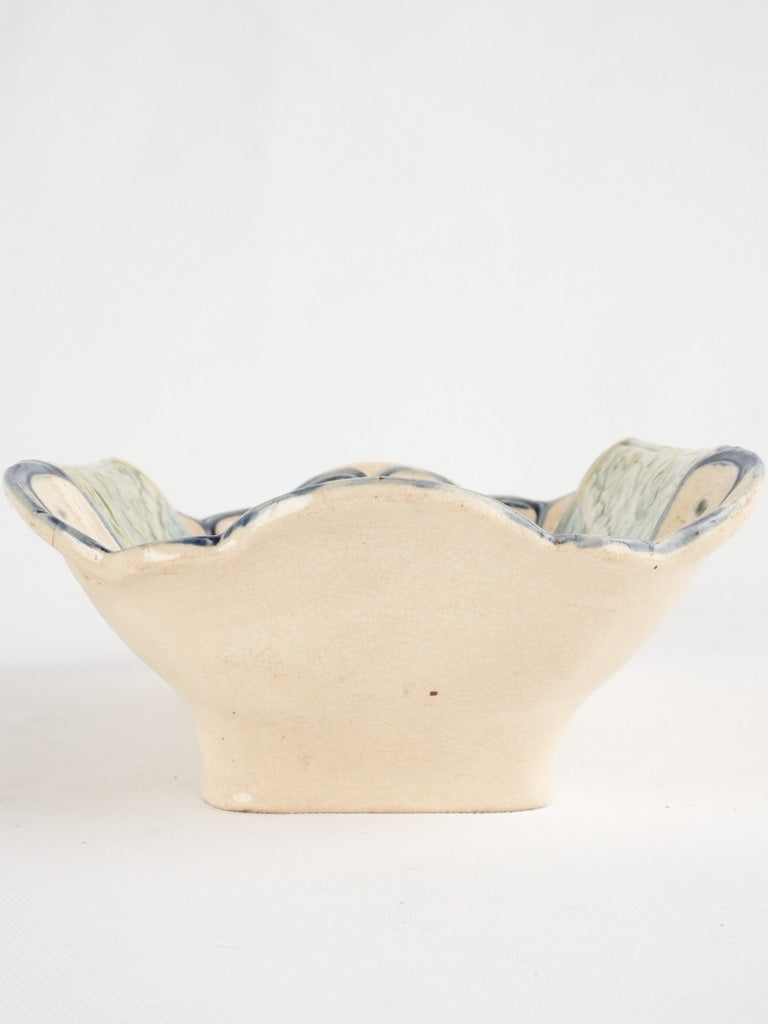
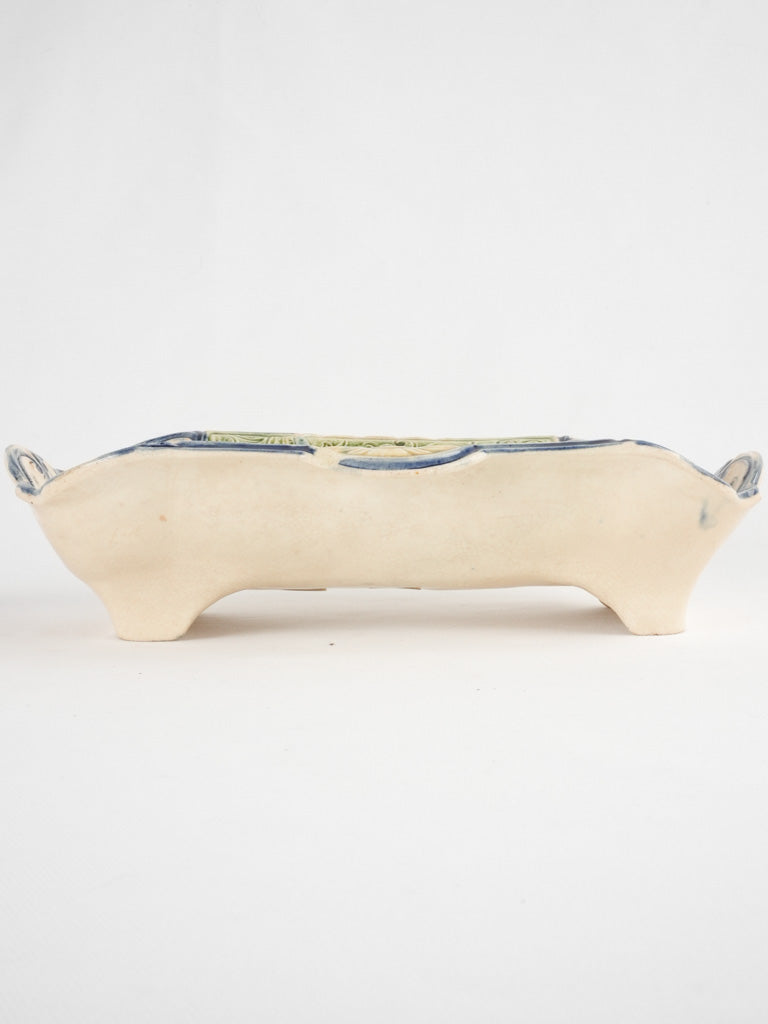
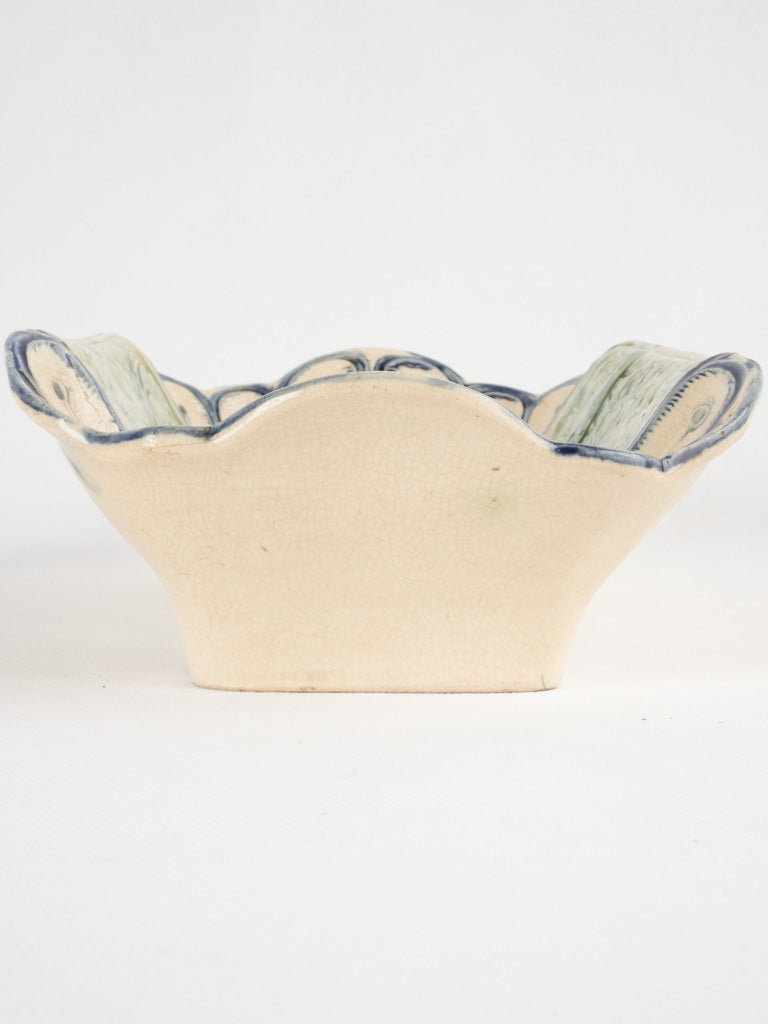
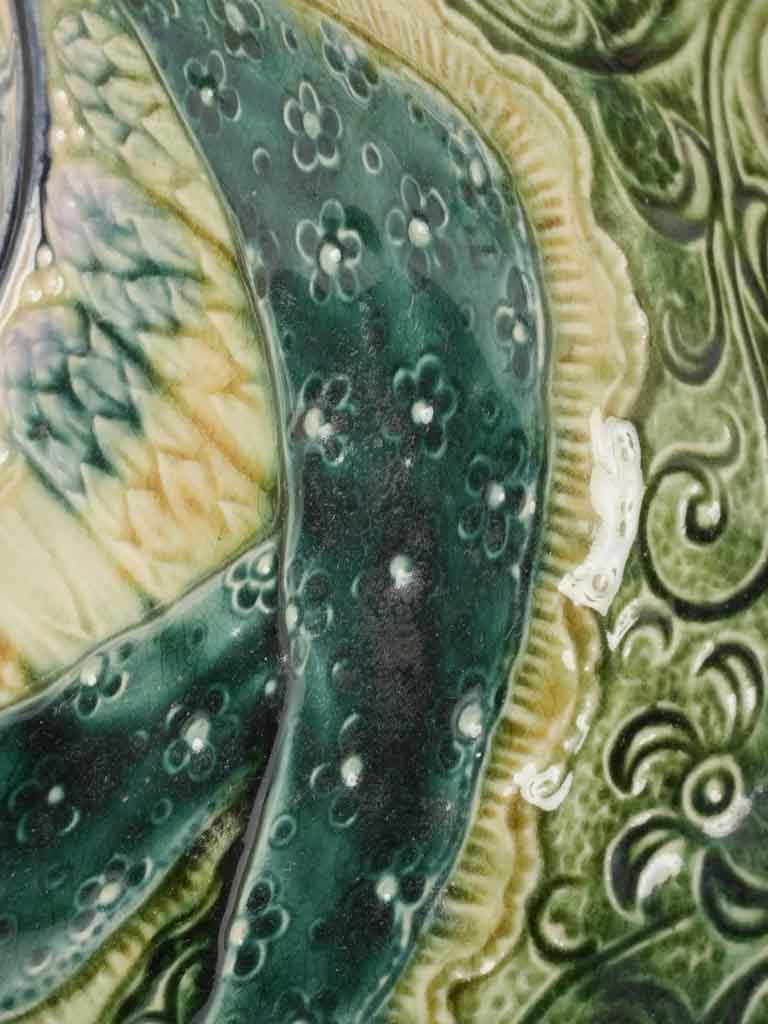
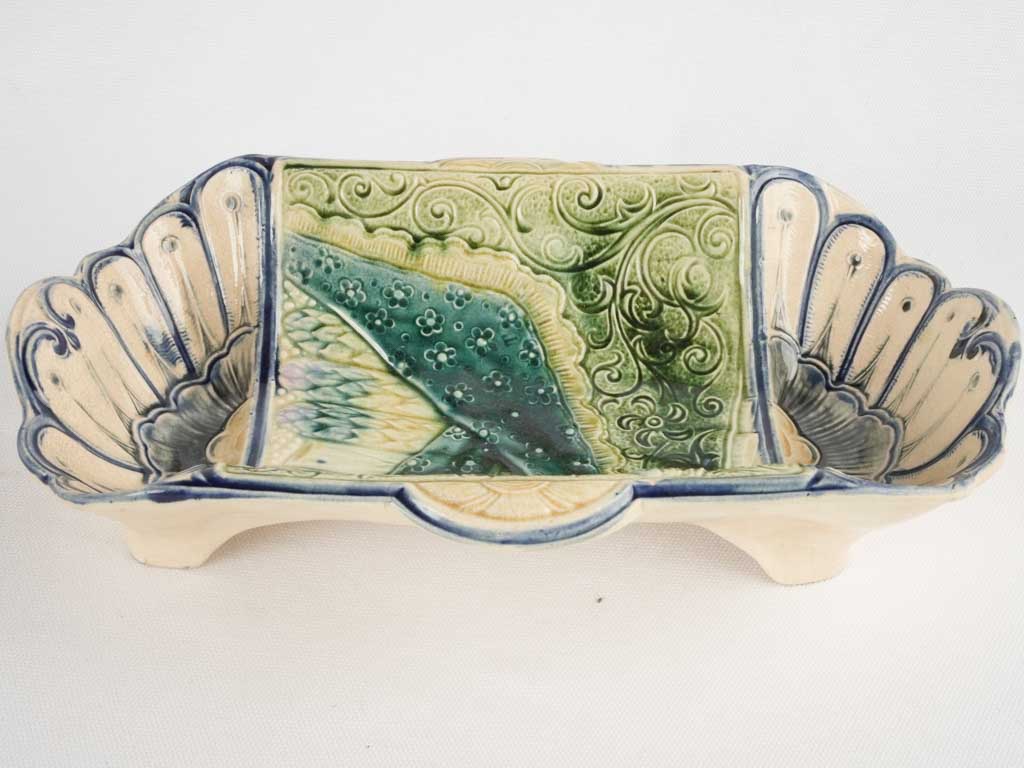
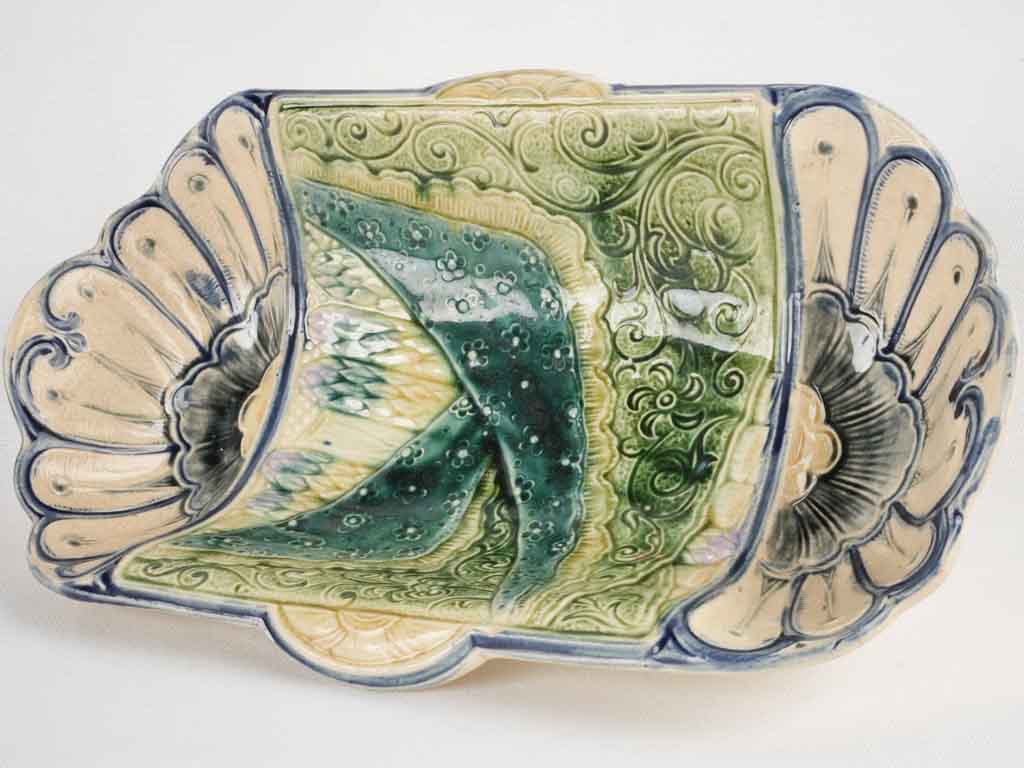
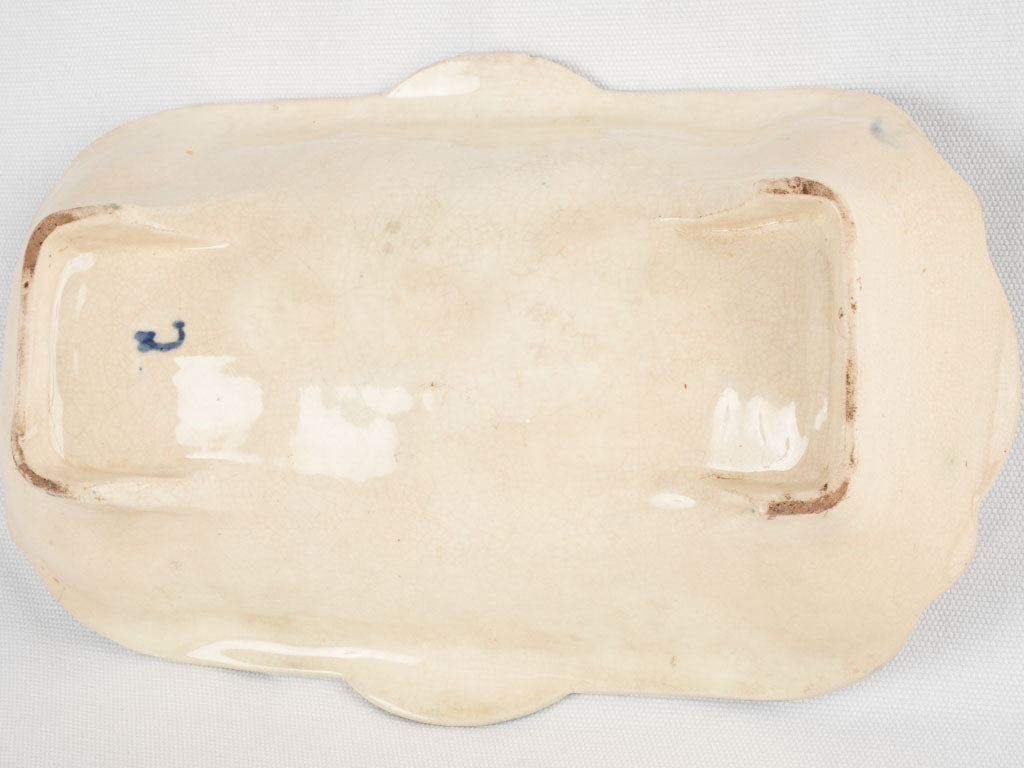
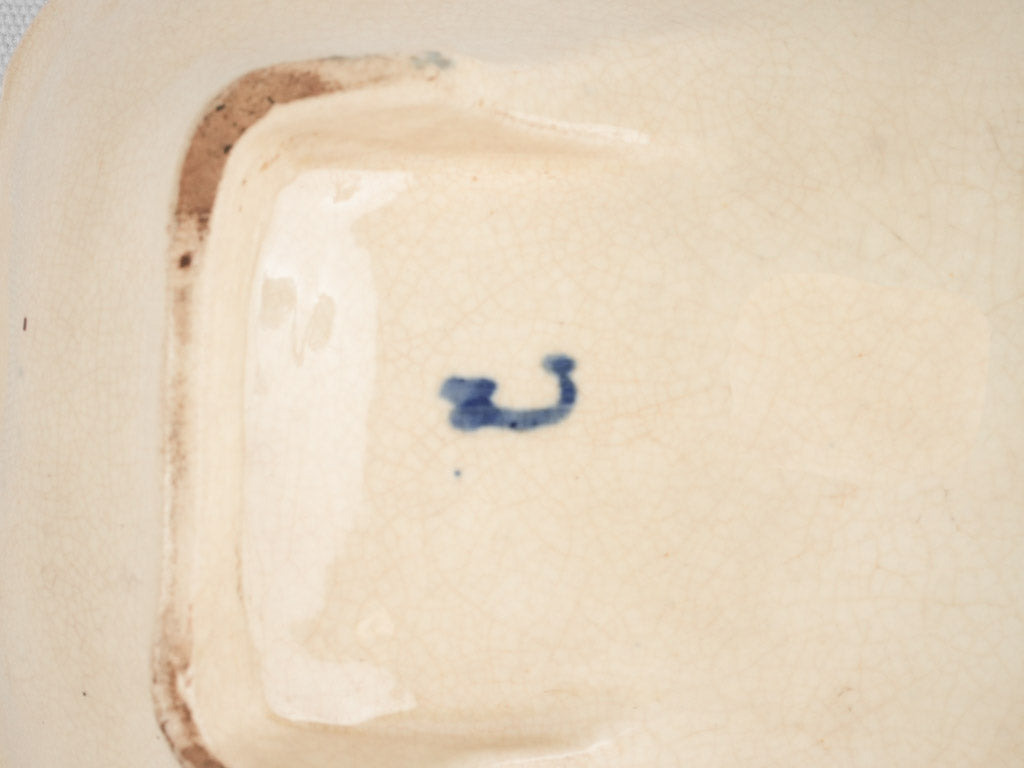
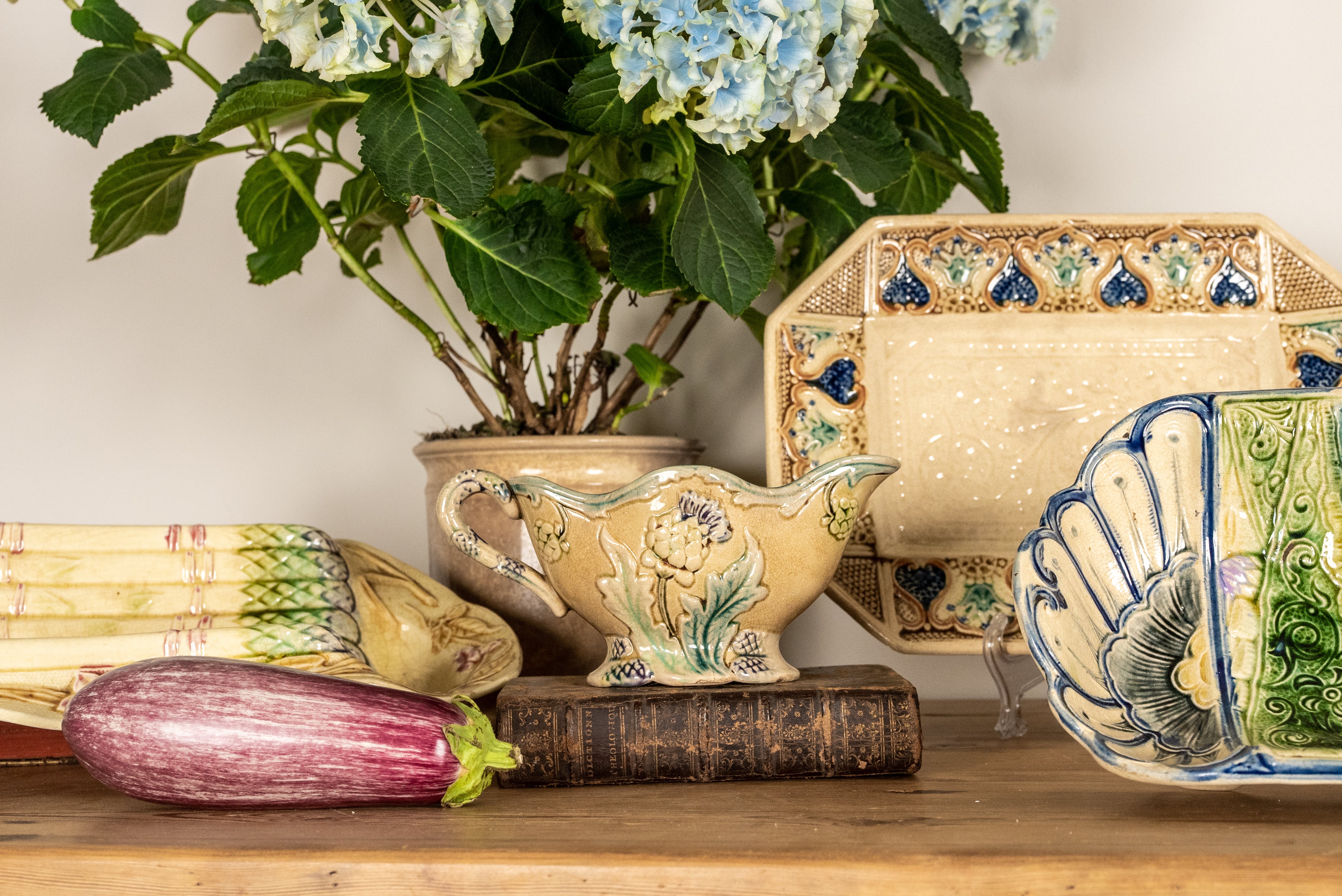
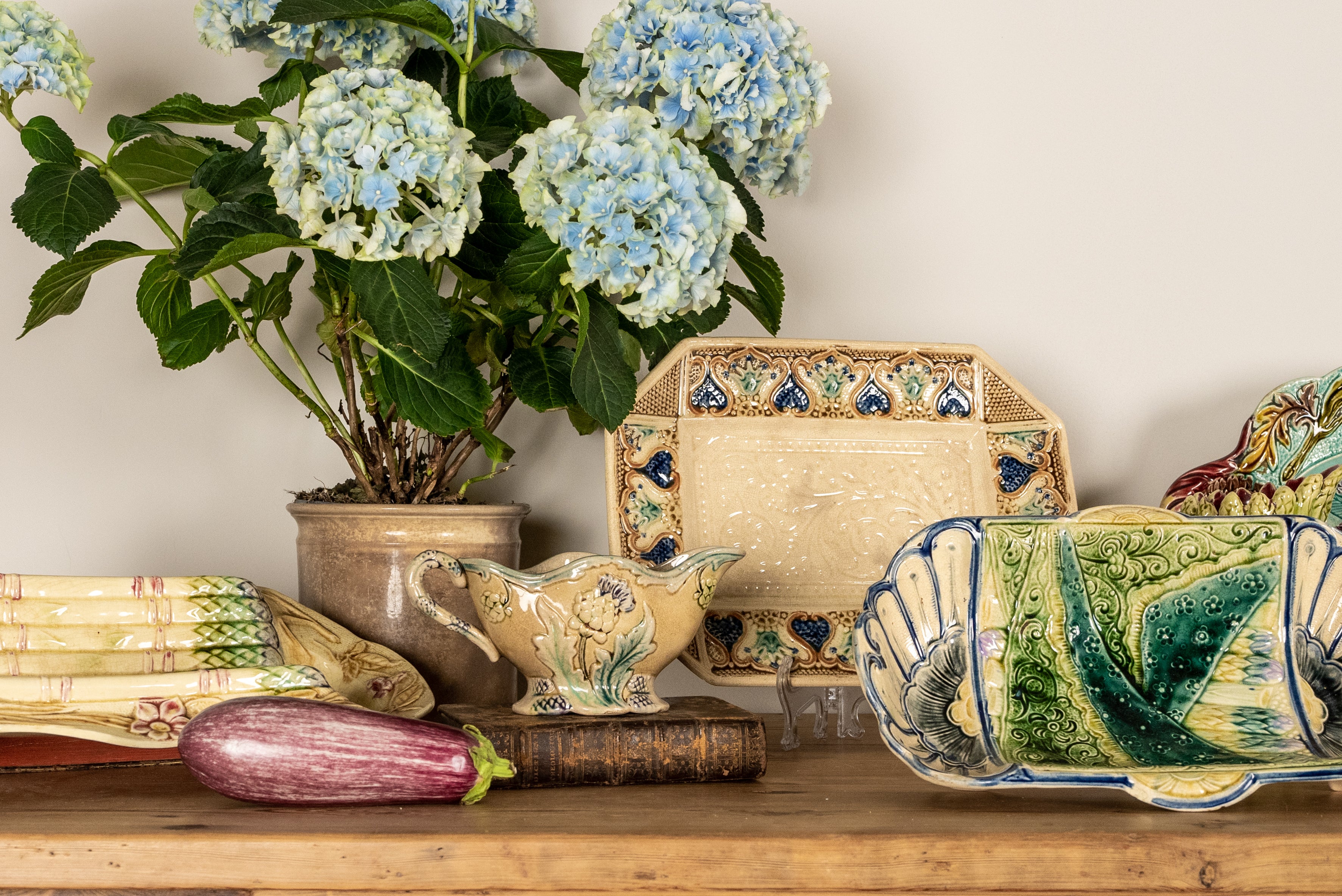
Late 19th century asparagus cradle Faïencerie de Wasmeul 13"
All inclusive pricing to USA
The price includes duties, taxes, tariffs and shipping. No more to pay for destinations within the US.
An exquisite asparagus cradle from the late nineteenth century made by the Faïencerie de Wasmeul in Belgium, signed 1890 signed Frédéric Thurner. The soft green, blue and beige glaze tones will complement a colorful collection of majolica ceramics.
Extract from barbontinebelge.com - translated from French
The Wasmuël earthenware factory was born in 1834 under the direction of Isidore Paulus, former director of the Onnaing factory. His wife Joséphine Renau succeeded him on his death in 1852, she extended and modernized the factory, in particular by purchasing a steam engine in 1865. Unfortunately, we do not know of any pieces from this period. According to certain archives, ordinary stanniferous crockery was produced. It was of two types: one in red earth and the other in yellowish earth. A white tin glaze was applied to the yellowish earth pieces, while those of red earth were of two colors, tin opaque white on the inside and dark brown more or less transparent on the outside. Fine ribbed earthenware, à fines côtes or à côtes de Tournai would have been produced in Wasmuël.
In 1878, the earthenware factory went into decline. Auguste Mouzin takes over the management by renting the factory for a 9-year lease. From 1880, he bought land (including that of Paulus) and enlarged the pottery. There are a number of very experienced people at the factory who come and go from one factory to another: François Dubois, Henri Mahieu, Émile Lombart, Arthur Ollinger, E. Petit, Jean-Baptiste Tastenoe, Frédéric Thurner, Désiré Tuna, etc.... As soon as the Paulus earthenware factory was taken over, earthenware remained but the commonly used tin-bearing earthenware was abandoned in favor of fine English-style feldspathic earthenware. The production of the factory is more particularly oriented towards fancy objects including monumental pieces which invaded interiors during the second half of the 19th century and whose vogue extended through the Modern Style until the 1900 era.
In 1893, France increased customs duties and the export of ornamental pieces became difficult, so production turned to the manufacture of tableware. In 1899, on the death of Auguste Mouzin, his son-in-law Eugène Meyer took over the business. He is continuing with the improvements to the factory with a view to increasing the production of crockery, while continuing to produce decorative pieces and majolica. In 1901 three new ovens, two of which were shaped like a beehive, were built.
In 1902, the statutes of the company are modified and the pottery is incorporated as a public limited company. The factory takes the name of Société Anonyme de Wasmuël. In 1907, Eugène Meyer died and his son Henry found himself at the head of the factory at the age of 22. Director of the pottery for more than forty years, Henry Meyer experienced the end of Art Nouveau and majolica, the Art Deco period and the style of the thirties. The era of monumental ceramics and large decorative pieces ended with the 1914-1918 war. The hand-painted decoration which remains next to the printing is gradually competed with by the "vapo" and the decalcomania. After the war, fashion changed, production became much more commonplace and oriented towards common items. The most original or successful pieces from this period are the sets of Art Deco vases and the crackle animals in vogue in the thirties.
The Paris exhibition of 1937 corresponds to an attempt at artistic renewal in industrial ceramics in Belgium to which Henri Meyer adheres by adopting in Wasmuël the painter Robert Van Nérom sent by Henri van de Velde for the preparation of the exhibition, the instructions of which are to create modern, sober, discreet, functional models, from simple geometric shapes. The exhibition will be a success, Henri Meyer is decorated with the Legion of Honor. During the 1940-1945 war, the production of tableware for everyday use took precedence over artistic activities. After the liberation, Robert Van Nérom again produced decorative pieces. Unfortunately, this will be the last prosperous period, the pottery begins to experience financial difficulties and must resign itself to an almost strictly commercial production. Faced with competition from cheaper foreign parts and fuel supply difficulties, the manufacture applied for a composition in 1951. On July 24 of that same year, the composition was approved by the Commercial Court of Mons.
The pottery is then put into liquidation and from 1952, we begin to demolish it. Today, all that remains is a crane, a chimney and a few mixers. Faced with competition from cheaper foreign parts and fuel supply difficulties, the manufacture applied for a composition in 1951. On July 24 of that same year, the composition was approved by the Commercial Court of Mons. The pottery is then put into liquidation and from 1952, we begin to demolish it. Today, all that remains is a crane, a chimney and a few mixers. Faced with competition from cheaper foreign parts and fuel supply difficulties, the manufacture applied for a composition in 1951. On July 24 of that same year, the composition was approved by the Commercial Court of Mons. The pottery is then put into liquidation and from 1952, we begin to demolish it. Today, all that remains is a crane, a chimney and a few mixers.
Condition and wear consistent with age and use.
Approx. overall 3¼" high x 8¾" wide x 13"
Approx. overall 8cm high x 22cm wide x 33cm
Choose options













Late 19th century asparagus cradle Faïencerie de Wasmeul 13"
Sale priceUS$430
Regular priceUS$760

